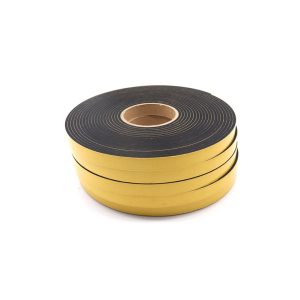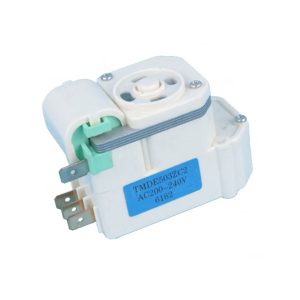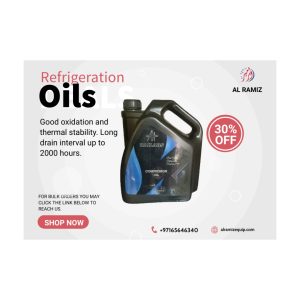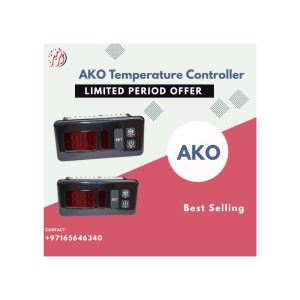Description
A Condensing Unit Refrigeration Compressor is a vital component in commercial and industrial
cooling systems, responsible for compressing and circulating refrigerant to remove heat from
a space. It consists of a compressor, condenser coil, fan, and other components housed in a single
unit. The compressor pressurizes the refrigerant, converting it from a low-pressure gas to a high-
pressure, high-temperature gas. The condenser coil and fan then dissipate heat, allowing the
refrigerant to cool and liquefy before circulating back into the system. Available in air-cooled and
water-cooled designs, condensing units ensure efficient cooling in refrigeration, HVAC, and food
storage applications.
specifications
. General Specifications
- Type: Hermetic, Semi-Hermetic, or Open-Type Compressor
- Application: Commercial, Industrial, or Residential Refrigeration
- Refrigerant Type: Compatible with common refrigerants such as R-134a, R-404A, R-407C,
R-410A, or R-22 (depending on the model) - Cooling Capacity: Ranges from 1 HP (Horsepower) to 30 HP or higher, depending on the
application - Voltage: 110V, 220V, 230V, 380V, or 460V (single-phase or three-phase)
- Frequency: 50 Hz or 60 Hz
2. Performance Specifications
- Compression Ratio: Typically between 2:1 and 10:1, depending on the design and application
- Displacement Volume: Measured in cubic meters per hour (m³/h) or cubic feet per minute (CFM)
- Maximum Operating Pressure: Ranges from 150 PSI to 500 PSI (varies by refrigerant type)
- Evaporating Temperature Range: -40°C to +10°C (-40°F to +50°F)
- Condensing Temperature Range: 30°C to 60°C (86°F to 140°F)
- Coefficient of Performance (COP): Indicates energy efficiency, typically between 2.5 and 4.5
3. Mechanical Specifications
- Compressor Design: Reciprocating, Scroll, Rotary, or Screw Compressor
- Number of Cylinders: 1 to 8 cylinders (for reciprocating compressors)
- Lubrication System: Splash lubrication or forced lubrication (oil pump system)
- Oil Type: Mineral oil, POE (Polyolester), or PAG (Polyalkylene Glycol)
- Oil Capacity: Typically 1 liter to 10 liters, depending on the compressor size
- Mounting Type: Horizontal or vertical mounting options
1. Commercial Refrigeration
- Supermarkets and Grocery Stores:
Compressors are used in walk-in coolers, display cases, and freezer units to keep perishable
items like meat, dairy, and produce fresh. - Convenience Stores:
Small condensing units power refrigerated displays for beverages, snacks, and frozen foods. - Restaurants and Cafes:
Used in cold storage units, ice machines, and beverage coolers to maintain food safety and quality.
2. Industrial Refrigeration
- Food Processing and Packaging:
Compressors are critical in cooling systems for processing, storing, and packaging
meat, seafood, dairy, and frozen foods. - Beverage Industry:
Used in breweries, wineries, and soft drink manufacturing to control fermentation
temperatures and store finished products. - Chemical and Pharmaceutical Industries:
Maintains precise temperatures for storing sensitive chemicals, vaccines, and medications.
3. Residential Refrigeration
- Home Refrigerators and Freezers:
Compressors are the heart of household refrigeration systems, ensuring food stays fresh
and safe for consumption. - Wine Coolers:
Specialized compressors maintain optimal temperatures for wine storage.
4. Cold Storage and Warehousing
- Cold Storage Facilities:
Compressors are used in large-scale refrigeration systems to store frozen and chilled
goods like fruits, vegetables, and seafood. - Distribution Centers:
Ensures temperature-controlled storage and transportation of perishable goods.
5. Transportation Refrigeration
- Refrigerated Trucks and Trailers:
Compressors are used in transport refrigeration units (TRUs) to maintain cold
temperatures during the delivery of perishable goods. - Shipping Containers:
Keeps goods at the required temperature during international shipping.
6. HVAC Systems
- Air Conditioning Systems:
Compressors are used in HVAC systems for cooling commercial buildings, hospitals,
schools, and residential spaces. - Heat Pumps:
Provides both heating and cooling by reversing the refrigeration cycle.
7. Specialized Applications
- Ice Rinks and Ski Resorts:
Compressors are used to maintain ice surfaces for skating and skiing. - Medical and Laboratory Equipment:
Used in medical refrigerators, freezers, and laboratory cooling systems to store samples,
reagents, and vaccines. - Agriculture and Horticulture:
Maintains controlled environments for greenhouse cooling and post-harvest storage of crops.
8. Hospitality and Entertainment
- Hotels and Resorts:
Powers refrigeration systems for kitchens, bars, and guest room mini-fridges. - Cruise Ships and Airlines:
Ensures food and beverages remain fresh during travel.
9. Energy and Utilities
- LNG (Liquefied Natural Gas) Plants:
Compressors are used in the cooling process to liquefy natural gas for storage and transport. - Renewable Energy Systems:
Used in geothermal and solar cooling systems.Applications of Condensing Unit Refrigeration Compressors
- Restaurants and Cafes:
Used in cold storage units, ice machines, and beverage coolers to maintain food safety
and quality. - Convenience Stores: Small condensing units power refrigerated displays for beverages,
snacks, and frozen foods - Supermarkets and Grocery Stores:
Compressors are used in walk-in coolers, display cases, and freezer units to keep perishable
items like meat, dairy, and produce fresh.










Reviews
There are no reviews yet.